Professional tiling in Exeter provided by David Tilbury
Tiling Services In Exeter
My Tiling Services in exeter and surrounding areas
Tiles With Style offers a quality Exeter tiling service, with knowledgeable guidance from concept to completion, our utmost aim is to provide 100% customer satisfaction through a professional, and prompt service. We offer supplying and fixing tiles or fixing tiles only in the following areas:
- Bathroom walls
- Shower room walls
- Bathroom floors
- Kitchen walls
- Kitchen floors
- Conservatory floors
- External tiling
- Tiling over existing tiled walls
- Tankingshoweroom walls
- Supplying and fitting undertile heating
- Electric Under Tile Heating
- Utility room tiling
Making the right choice
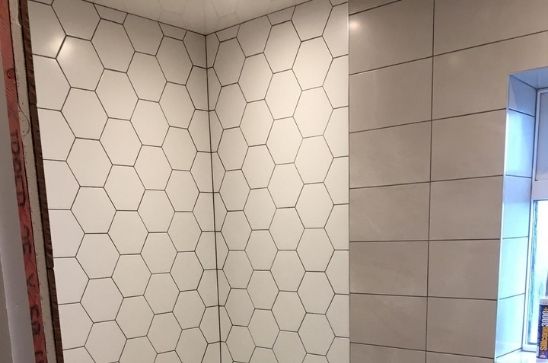
Ceramic
Ceramic tiles are usually made from red or white clay, fired in a kiln and almost always finished with a durable glaze that carries the colour and pattern. These tiles are suitable for domestic interior wall and floor tile applications (*dependant on PEI rating) and are softer and easier, to cut and shape than porcelain, some are however also more prone to wear and chipping, and have higher moisture/water absorption which makes them less frost resistant.
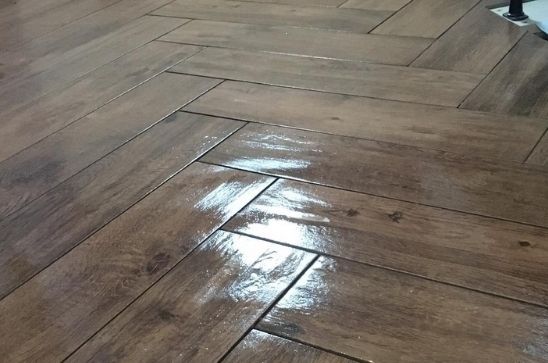
Porcelain
Porcelain tiles are generally made using the dust pressed method from porcelain clays, this results in a tile that is dense, impervious, and carries the colour and pattern of the tile right through the entire thickness of the tile. These tiles are very hard wearing and suitable for both domestic, and commercial tiling applications, they are frost resistant or frost proof, but as a consequence they are harder to cut. Finally their availability ranges from matt, and unglazed to a highly polished finish.
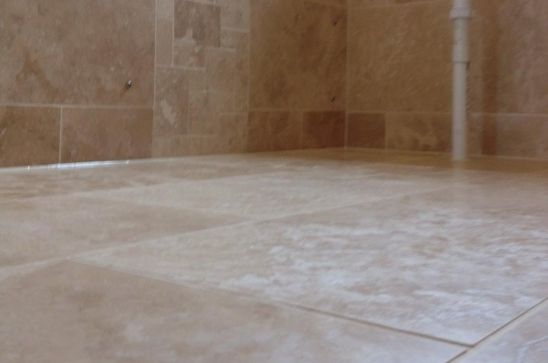
Natural Stone
Natural stone refers to all the Travertine, Limestones, Slates, and Marbles created during the formation of the earth, these materials are quarried and mined from sites all over the globe, modern day techniques are used alongside traditional skills to cut, hone and polish these tiles. Some stone remains porous in its natural state and requires sealing correctly on installation to prevent moisture absorption and staining, and all stone will have natural fault lines that can make it difficult to cut accurately, but it remains one of the most durable and beautiful of all wall and floor coverings when properly installed.
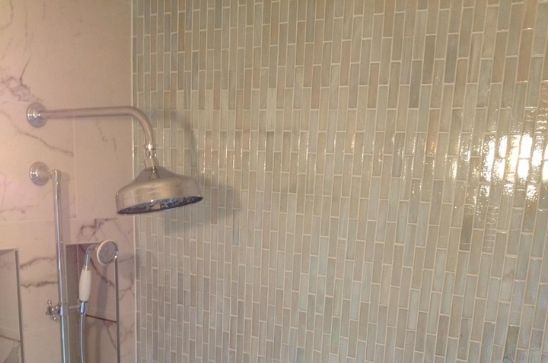
Glass
Glass has been used in the decoration of buildings for at least a thousand years, and the ability to reflect light is just one of it’s many attractive qualities. With this in mind, glass tiling is designed mainly for walls, with an enormous amount of coloured glass tiles of all shapes and sizes to choose from. The glass itself can also be produced with different finishes, either clear, frosted or tumbled, they all give a spectacular and clean effect when precisely cut and installed,
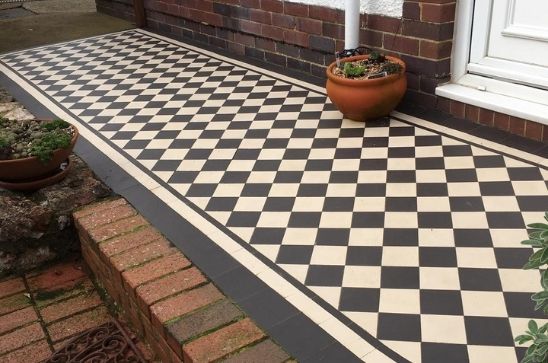
Victorian Flooring
Victorian floor tiles are colourful, geometric, unglazed, vitrified, dust pressed ceramic tiles, for interior and exterior use. They are part of Britain’s heritage and were originally used in medieval churches, monasteries and the homes of the aristocracy, their popularity was enhanced in the 1830’s by the accession to the throne of the young Queen Victoria, and today you see them mainly in the interior and exterior entrance ways of houses of that period. They are frost resistant and abrasion resistant, with one of the most important factors in their installation being the preparation of the surface to be tiled, because there is no bevelled edge on the face of these tiles, to facilitate any undulations.
P.E.I Ratings
- PEI Class 1 Rating (No foot traffic) Tiles recommended for wall use only, in residential and commercial applications.
- PEI Class 2 Rating (Light traffic) Tiles recommended for both wall and residential bathroom floor applications only.
- PEI Class 3 Rating (Light to moderate traffic) Tiles recommended for counter tops, walls and floors where normal residential foot traffic is expected.
- PEI Class 4 Rating (Moderate to heavy traffic) Tiles recommended for all residential applications as well as medium commercial, and light institutional traffic.
- PEI Class 5 Rating (Heavy to extra heavy traffic) Tiles recommended for all residential, as well as heavy commercial and institutional applications.
